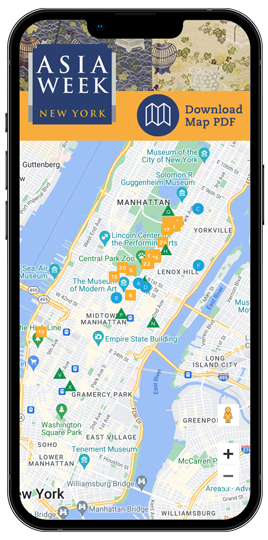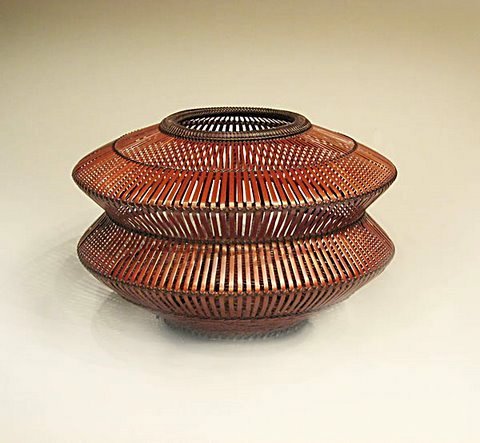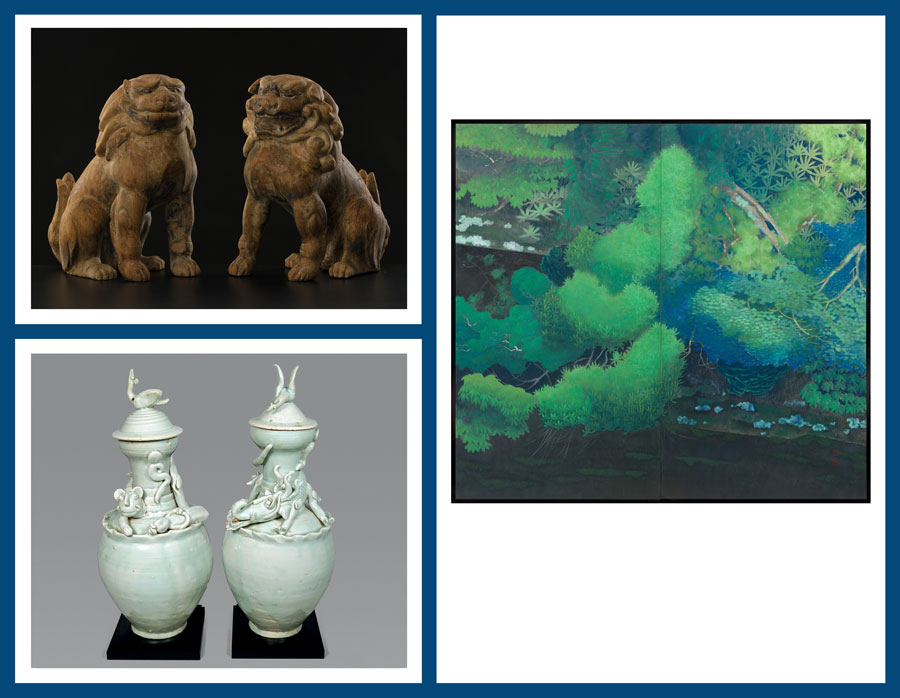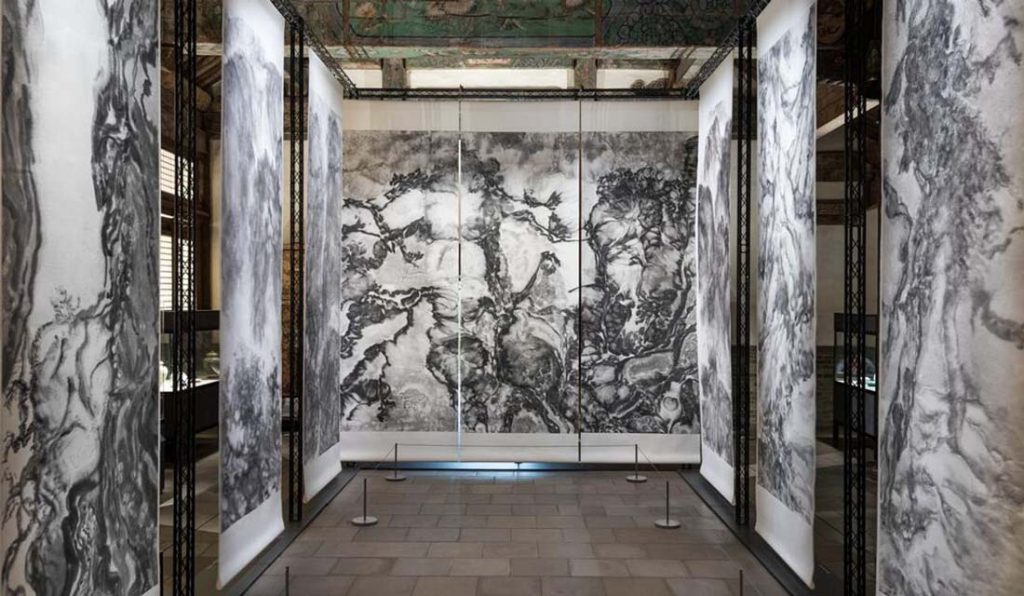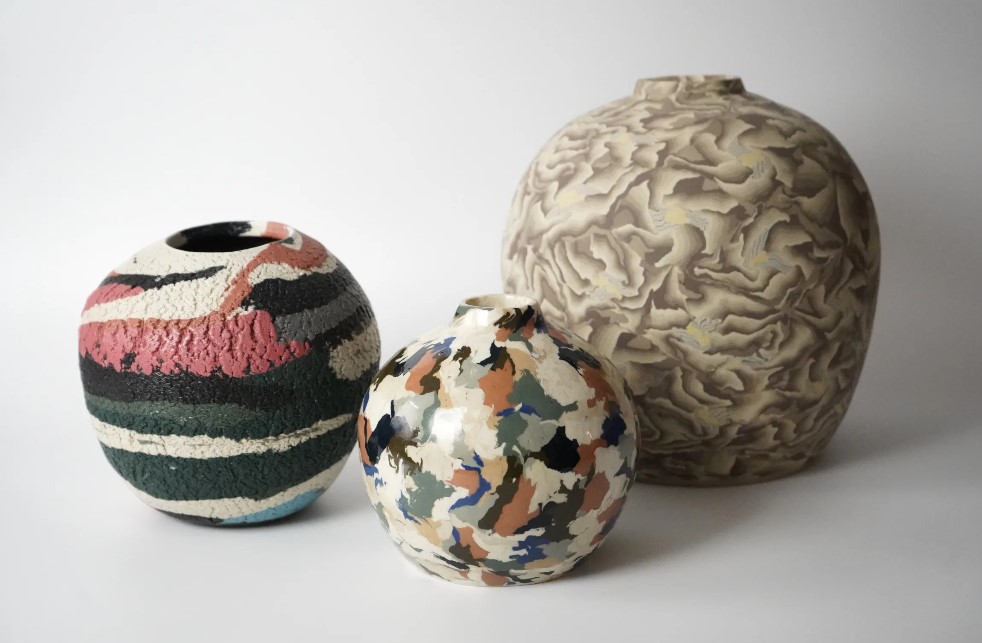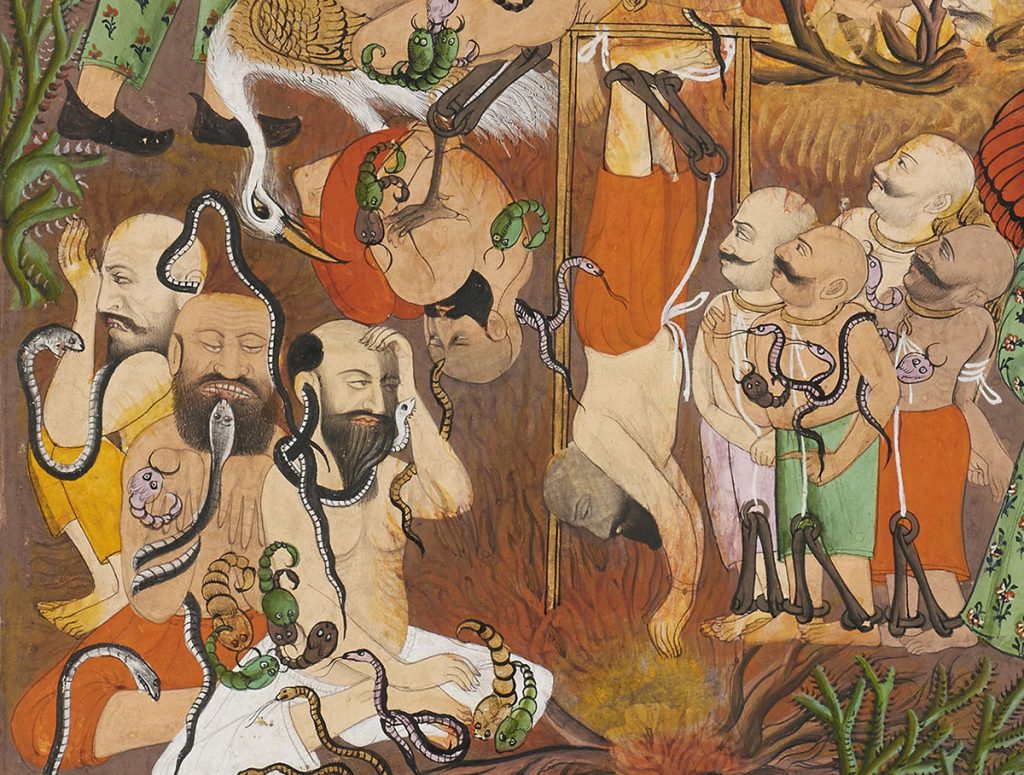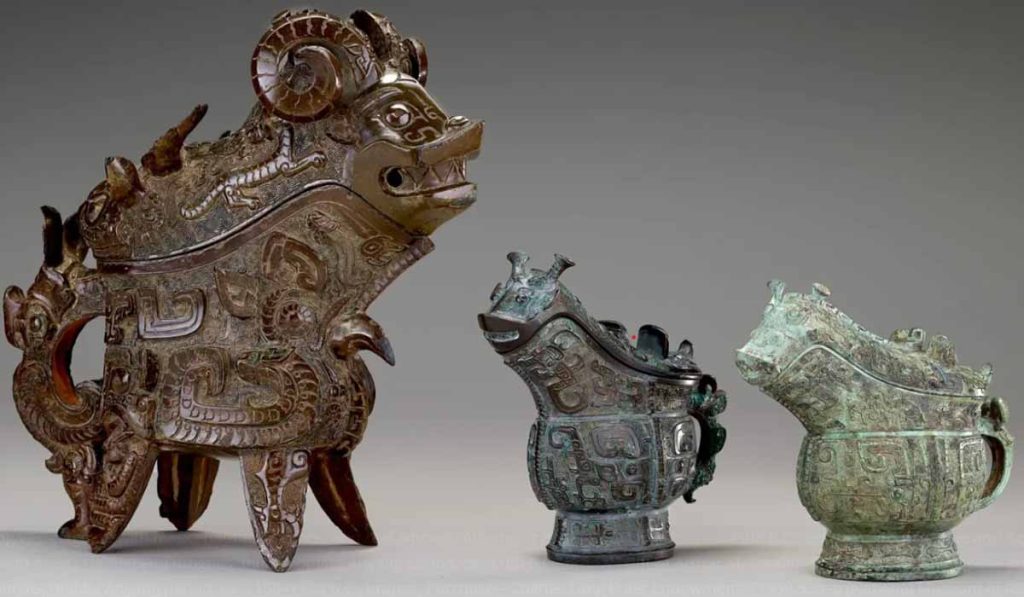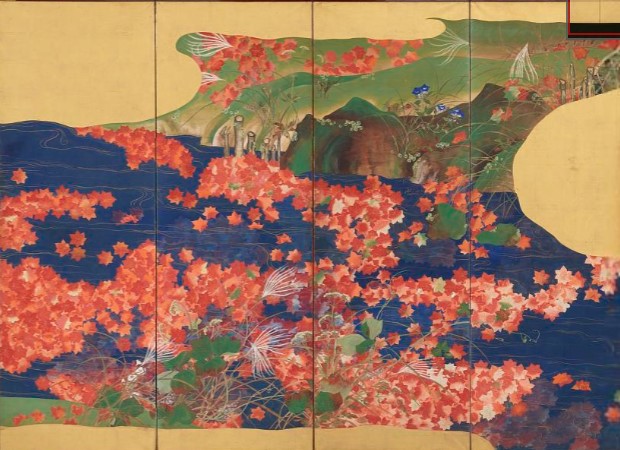The Fathers of the People of Error Are Punished in Hell (detail), miniature from a copy of Hamla-i Haydari (‘Ali’s Exploits), India, Deccan, Hyderabad (?) ca. 1800, manuscript page; ink, opaque watercolor, and gold on paper, The David Collection, Copenhagen, 19/2015
Comparative Hell: Arts of Asian Underworlds,
Asia Society
February 28-May 7, 2023
From now through May 7th, the Asia Society is exhibiting Comparative Hell: Arts of Asian Underworlds, which explores portrayals of hell across Buddhism, Hinduism, Jainism and Islam in Asia. This is the first comprehensive exhibition of its kind in the United States, examining how systems of belief and the underworlds within them are manifest in the rich artistic creations of Asia.
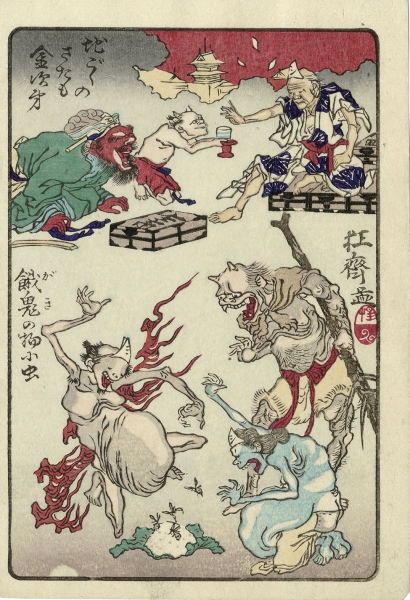
Kawanabe Kyōsai (1831–1889, Japan), Even in Hell Money Counts (Jigoku no sata mo kane shidai), Bugs in the Food of the Hungry Ghost (Gaki no mono ni mushi), from the series One Hundred Pictures by Kyōsai (Kyōsai hyakuzu), Japan, Edo period (1615–1868), 1863–66 (Bunkyū 3–Keiō 2), Woodblock print (nishiki-e); ink and color on paper Museum of Fine Arts, Boston, William Sturgis Bigelow Collection, 11.37028
The cosmology of each religion is expressed through didactic paintings, sculptures, and sacred objects. Artwork on view portrays the ominous religious threats of fiery torture intended to shape values and beliefs, instill virtuous behavior, and encourage atonement for sins—reflecting a universal human desire for spiritual transformation. As different as they are, these ideas about judgment, punishment, and salvation after death are often shared by the varied traditions.
An illustrated catalogue accompanying the show includes contributions by curator and editor, Adriana Proser, and esteemed scholars Geok Yian Goh, Phyllis Granoff, Christiane Gruber, Michelle Yun Mapplethorpe, and D. Max Moerman. Copublished with Asia Society Museum by Officina Libraria, it is available for purchase at AsiaStore.
Read more, click here
